
11 minute read
Portrait of a presidency: EFMA celebrates 50 successful years of leadership
By Jillian Mitchell
For Art Whistler, 197273 association president, relationships encompass the essence of the group. Wilf Pelly, who joined the association in 1970 under his boss’s encouragement, was president in ’74 and confirms that high emphasis was given to fun and fellowship, among traditional association goals. Camaraderie was a draw for Alan Scott to join the association in 1966, and he proudly adopted the role of the association’s 13th president in 1975. Past-president Art Vanidour became involved in SPOA long before it became an official association, thanks to the encouragement of colleague Jim Thorpe, who became association treasurer. The ‘80s proved eventful for the association, as past-president of ‘81 Ron Mason confirms, particularly in that the professionalism of the association had strengthened.
An association is built by people, and people are built by their memories. Here to celebrate the Educational Facility Managers Association of B.C.’s (EFMA) 50th anniversary are the past presidents with the story of the association, as they tell it.
For Art Whistler, 1972-73 association president, relationships encompass the essence of the group. A formative member of the then School Plant Officials Association (SPOA), Whistler attended the inaugural association meeting at Vancouver’s Blue Boy Hotel in 1964, and from that very first meeting until his retirement from the Coquitlam School Board in 1988, he was consistently met with good fun and fellowship.
Proof-positive, the executive and fellow members enjoyed a tranquil evening boat cruise in Burrard Inlet and Indian Arm during the ‘73 SPOA conference. As Whistler shares, this was back when the annual conference travelled around the province – a means he found valuable: “There are advantages in having annual conferences in different cities,” says Whistler, "especially in Victoria, where the delegates would have an opportunity to lobby departments in the ministries."
Following Whistler as the ‘74 president was Wilf Pelly of School District 24 (Kamloops), who joined the association in 1970 under his boss’s encouragement. As Pelly confirms, high emphasis was given to fun and fellowship, among traditional association goals.
“It’s always great fun,” he says of his SPOA involvement. “I always considered fun as a major part of the program. People liked to go to our conferences to learn and have fun. That seemed to round-out the conference for me.”
Throughout the years, the association has continually remained abreast of industry changes, and member input was always welcome, particularly in the planning stages of each annual conference. As Pelly adds, the questionnaire distributed to each conference attendee
1994’s president John Merriott thoroughly enjoyed being on a first-name basis with everybody, especially when concerning a work problem. Bob Hardy, an association member since 1977, took over the role as association president in 1997, flying back and forth every five weeks for association meetings for the next two years. Ernie Lambert confirms that the values and essence of the early association had been well-maintained when he took over as president. In 2005, Lisa Johnston of Mission Public School District No. 75 was elected as the association’s first female president. In 2007, Chuck Morris took his place as president at the helm of SPOA. A member since 1999, Morris joined the executive in 2003 as a director and soon took over publishing the association’s newsletter.
in preparation for the following year’s event was very proactive.
As Pelly’s presidential successor, Alan Scott proudly adopted the role of the association's 13th president in 1975. During his tenure, Scott and the executive continued on the proactive path set forth at the inaugural meeting, with no issues to report. "It stayed pretty much the same in those days, for a long time,” Scott says, “but it has changed so much since the days I was in there. I don't think we dreamed that it would ever grow this large.”
Once again, camaraderie was a draw for Scott to join the association in 1966: “It didn't matter whom you talked to, they were quite willing to talk to you. Everyone was open," says Scott, who worked with the Greater Victoria School Board at the time of his presidency.
Interestingly, 1975 was the inaugural year of the association’s annual wine and cheese party – a happenstance brought on by bad weather. The year's barbeque was cancelled and upon the suggestion of a hotel maintenance worker, the group proceeded with a wine and cheese function.
“It was the very first wine and cheese party and evidently it's worked out well, because they have it every year," Scott adds.
Past-president Art Vanidour became involved in SPOA long before it became an official association. Thanks to the encouragement of colleague Jim Thorpe, Vanidour joined the group in the mid‘60s and remained an active member until his retirement from the Nanaimo School District in 1990.
“I had it pretty easy. Jim Thorpe was a pretty generous person, and he always included me in whatever was going on,” says Vanidour, 1976-1977 association president. “When I became president, he became treasurer and we were in the same office.”
The value of the association – even before its official formation – was always apparent to Vanidour, and that was, again, the opportunity to build long-standing relationships: “You get to know people at these conferences and the particular area they were involved in. And if you had a problem, you could call them. They were a friend."
The ‘80s proved eventful for the association, as past-president of ‘81 Ron Mason confirms, particularly in that the professionalism of the association had strengthened. "Over the years the school districts, through our members, have become a lot more involved, and the organization has become progressively more professional and has given people even more value,” says Mason, who worked at School District No. 67 (Okanagan Skaha) at the time of his tenure. “And the ministry has recognized our association."
Though Mason retired from the educational sector in 1999, he continues to attend the annual conferences (and has
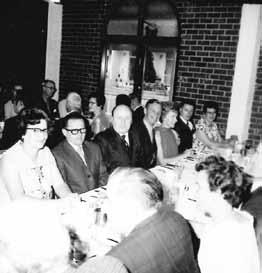
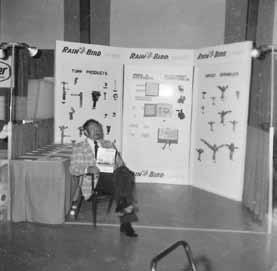


SPOA Executive members, 1972. Left to right: Wilf Pelly, Bill Marr, Bill Barnes, Allan Scott, Frank Harris, and Arthur Whistler. June 1976 SPOA banquet head table (left to right): Rhoda Scott, Art Vanidour, Joan Dyson, and Rob Minter. SPOA past presidents, circa 1987. Top row: Ron Minter, G. Routley, Bill Whyte, Ed Bodner, Ralph Grabenhorst, Mac Christen, and Tom Browning. Centre row: Art Vanidour, Jack Hannan, Ken Warner, and Arthur Whistler. Bottom row: Ron Mason and Bob Dyson.
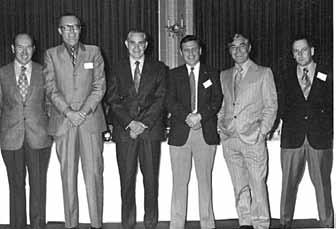
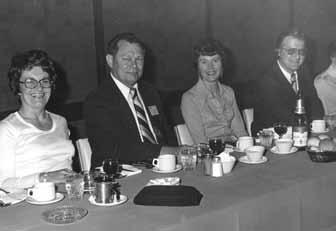

since the association’s ninth year) and remains involved in new member orientation and the bursary program. "My heart is in seeing the organization stay strong,” he says. “You can get buried in ideas at a conference. If you do nothing else other than tick off two items, you have gained from coming to this conference.”
By the time you work up the executive ladder, you're on a first-name basis with everybody, and that is one thing 1994's president John Merriott thoroughly enjoyed, especially when concerning a work problem. Rather than reinventing the wheel, he was able to contact fellow members.
As Merriott recalls, the ‘90s proved equally pertinent for the association, as interest in the annual conference reached an all-time high. “I think that our biggest problem that year was that we had to turn exhibitors away from the conference because we didn’t have the room,” says Merriott, a member since 1978 who worked in the Campbell River School District at the time of his presidency. “We sat down at the end of the conference to decide on a better venue. The next year, we started in Penticton and we’ve been going there ever since. It’s more central in the province.”
Bob Hardy, an association member since 1977, took over the role as association president in 1997, a role he continued for two years. Working in Haida Gwaii in School District No. 50 while living in Hope, B.C., Hardy pulled double-duty, flying back and forth every five weeks for association meetings for the next two years. "That's the kind of passion I have for the association," Hardy recalls of his tenure, noting that there were a lot of amalgamations in the districts at that time. "Just working with so many people, so diverse, it really was enjoyable."
Though Hardy retired from the industry in 2001, he still remains active in the association. The upcoming conference will be his 37th consecutive conference. Regarding the future of the association, Hardy comments, "I hope it goes for another 50 years in the way we've operated for the past 50 years. It's in good hands and looks like it's going to progress."
Perhaps it was the new millennium that brought about the most change for SPOA, soon to be EFMA. Five years after the conclusion of Hardy's tenure, Ernie Lambert took his hand at the association presidency, and as Lambert confirms, the values and essence of the early association had been well-maintained.
The executive had a number of initiatives on-the-go that year, including the development of strategic plans for the future of the organization and a certification process for members, in addition to relationship-building with other associations and ministries.
“We made sure we had our ‘ducks in a row’ and it enhanced our ability to be professional and be seen as professional throughout the industry,” says Lambert, who joined the association in 1980 while working at Selkirk College. “I have nothing but support and appreciation for the association. I’d like to see its continued evolution.”
For Lambert, one of the biggest steps in the right direction occurred in 2011 with the rebranding of SPOA to the Educational Facility Managers Association (EFMA) in June 2011, at the 47th Annual General Meeting, held at the Penticton Trade and Convention Centre.
“The conversion with EFMA is a step in the right direction,” he says. “And I’d like to see more new people get involved.”
In 2005, Lisa Johnston of Mission Pub-

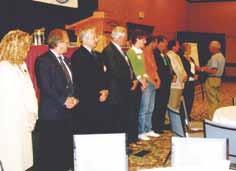
lic School District No. 75 was elected as the association's first female president. Under the encouragement of Bob Hardy, Johnston became involved with the association executive, and the rest, as they say, is history. "I was very nervous to become president, but the support provided to me by fellow members was incredible. My hat's off to every person who assisted me during that time," says Johnston, who joined the association in 1996 and remained a member until her move to international education in 2012. "The knowledge and skills I gained as a member of the association have helped me in all aspects of my life. It was an experience I will never forget."
That year, the association held their inaugural joint conference with three provincial associations – the Recreation Facilities Association of B.C., the B.C. School Safety Association, and the Council of Educational Facilities Planners International. The goal was to open up lines of communication between neighbouring industries and the ministry. As Johnston says, it was one of the largest conferences to date, with 140 tradeshow booths and 223 attendees. "Because we were able to expand the conference with other associations, it allowed us to provide more educational opportunities. So it was beneficial to our members and a great opportunity to meet people from the other associations," she says. "It was a lot of hard work for the executive but well worth it."
In 2007, president Chuck Morris, now general manager of Aurora Cascade Ent. Ltd., took his place at the helm of SPOA. A member since 1999, Morris joined the executive in 2003 as a director and soon took over publishing the association’s newsletter.
“There is an awesome level of responsibility involved,” Morris reflects of his time as president. “The annual conference is a major impetus to do well, as it attracts a lot of membership and vendors who support the association.”
Morris is also a proud advocate of the Ops Talk magazine, which the group initiated in 2004: “Today, Ops Talk looks and feels every bit as good as it did back then,” he says.
Other fond memories for Morris include teaming up with Lambert in 2008 to develop a mentoring program for the association. That same year, the two gentlemen were successful in promoting and hosting a professional development day in Richmond that was attended by ministry people and a variety of industry experts.
With 50 successful years of leadership, EFMA has a firm foundation to move forward. Collectively, each of the aforementioned past presidents believe the association to be a strong and valuable asset to industry, and hope that the future only serves to further cement the intentions of the association.
In conclusion, Pelly shares words of encouragement echoed by his fellow presidents: “Just keep up the good work. And keep the communication between each other going strong. That’s the crux of the whole thing, in my opinion.” b

Your ONE Tractor Solution
Watch Ventrac Slope Video
Great on SLOPES & Much MORE
Looking for a safer solution for operating on Slopes? Navigate slopes up to 30° (58% grade) with Ventrac when properly equipped. Connect to over 30 commercial grade attachments and get the job done all year round.
30o
58% GRADE

ONE tractor... Over 30 Commercial Grade Attachments. Contact your local Ventrac dealer today for a DEMO!
www.ventrac.com/slopes










